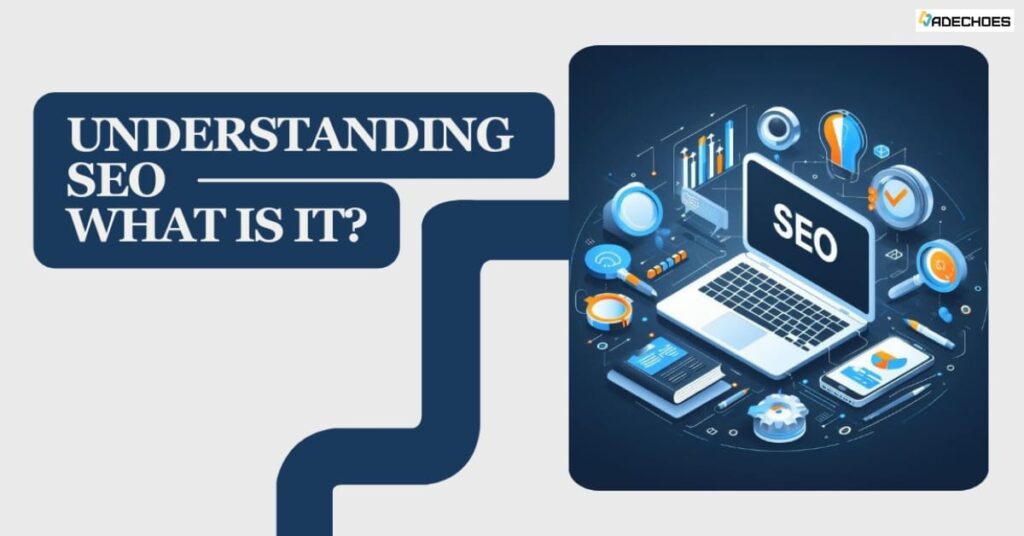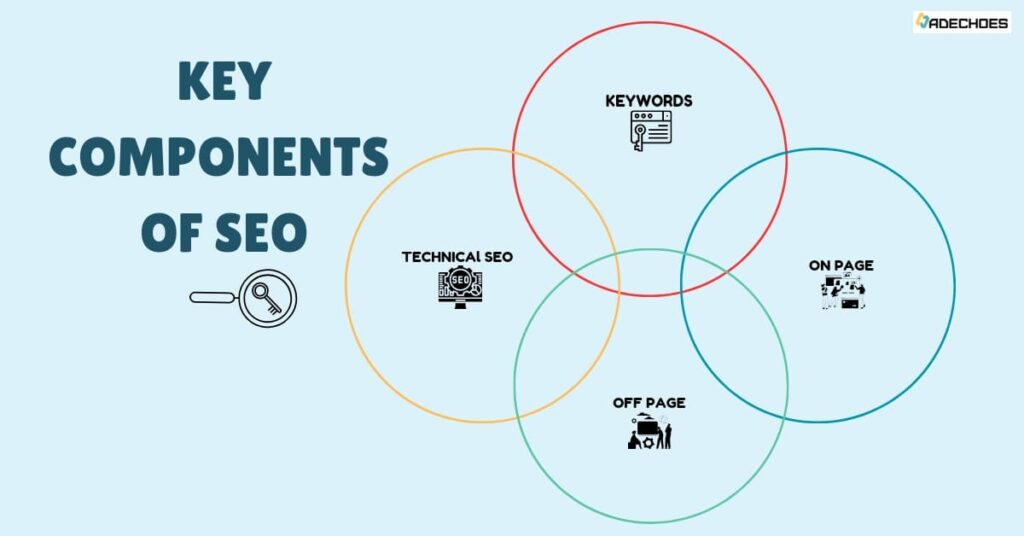It can be hard for beginners to understand the world of SEO, especially for newcomers. So we are here with the complete SEO Guide for beginners.
Do not be alarmed! We guarantee that our in-depth guide will simplify the fundamentals and provide you with useful strategies.
Prepare to set out on a journey that will completely change your online presence, from learning the principles of SEO to optimizing your website for increased visibility. Let’s get started on the crucial steps to being an SEO guru and accomplishing your online marketing objectives!
Greetings from the universe of SEO, or search engine optimization! If you’re new to the concept, don’t worry, we’re here to guide you through it step by step. In this comprehensive guide, we’ll delve into the fundamentals of SEO and equip you with the knowledge to boost your website’s visibility on search engines like Google.

The practice of optimizing your website to appear higher in search engine results pages (SERPs) naturally is known as SEO or search engine optimization. In simple terms, it’s about increasing the visibility of your website to users who are looking for keywords related to your content. By implementing effective SEO strategies, you can attract more organic traffic and improve your website’s overall performance.
Now, you might be wondering, why is SEO important for beginners. Well, imagine having a fantastic website with valuable content, but no one can find it. That’s where SEO comes in. By optimizing your site, you can increase your chances of being discovered by potential visitors, thereby boosting brand awareness, generating leads, and even increasing sales.

To truly grasp the concept of SEO, it’s essential to understand its key components:
Keywords are the backbone of SEO. When searching for information, these are the terms or sentences that individuals enter into search engines. Conducting keyword research allows you to identify relevant keywords for your content, including long-tail keywords that are less competitive but highly targeted.
Optimizing individual web pages to rank better and bring in more relevant traffic is known as on-page SEO. Using your selected keywords in title tags, meta descriptions, headings, and content is part of this process. Additionally, focusing on factors like internal linking and user experience can further enhance your on-page SEO efforts.
This involves participating in online forums, constructing high-quality backlinks from reliable websites, and using social media marketing. Off-page SEO contributes to the search engines’ opinion about the authority and trustworthiness of your website.
Technical SEO focuses on the backend of your website, optimizing its infrastructure to ensure it’s search engine-friendly. This includes factors like site speed, mobile-friendliness, SSL certificates, and structured data markup. By addressing technical issues and improving site performance, you can enhance your website’s visibility and rankings in SERPs.
I am aware that you still have questions regarding off-page and on-page SEO. The Answers to All the Questions You may have are provided here.
On-page SEO refers to the optimization efforts made directly on the web pages of a website to improve its search engine rankings and attract more relevant traffic. It involves optimizing various elements of a webpage to make it more accessible and understandable to both search engines and users. Here’s a detailed explanation of the key components of on-page SEO:
Off-page SEO, on the other hand, focuses on external factors that influence a website’s search engine rankings and authority. It involves activities carried out outside of the website itself to improve its reputation, relevance, and trustworthiness in the eyes of search engines. Here’s a detailed explanation of the key components of off-page SEO;
In summary, while on-page SEO focuses on optimizing elements within your website, off-page SEO involves building external signals of trust, authority, and relevance to improve your site’s rankings and visibility in search engine results. Both on-page and off-page SEO
Before you embark on your SEO journey, it’s crucial to define your objectives. Whether it’s increasing website traffic, improving rankings, or boosting conversions, setting clear goals will help guide your SEO strategy and measure your success.
Keyword research is the foundation of SEO. Start by identifying relevant keywords for your niche using tools like Google Keyword Planner, SEMrush, or Ahrefs. Look for high-volume, low-competition keywords that align with your content and audience’s search intent.
Optimizing on-page elements is essential for improving your website’s visibility in search results. This includes optimizing title tags, meta descriptions, headings, and content with your target keywords. Make material that is interesting, educational, and beneficial to your audience.
Website performance plays a crucial role in SEO. Focus on technical aspects like site speed, mobile responsiveness, and site security to enhance user experience and satisfy search engine algorithms. Utilize performance-related technologies such as GTmetrix and Google PageSpeed Insights to find and fix problems.
Earning quality backlinks from authoritative websites is essential for boosting your website’s authority and credibility. Focus on building natural, relevant, and diverse backlinks through guest blogging, influencer outreach, and content promotion. Don’t use spammy strategies that can damage the reputation of your website.
Use Google Analytics and Google Search Console to regularly monitor the performance of your website. Track key metrics such as organic traffic, keyword rankings, backlink profiles, and conversion rates to evaluate the effectiveness of your SEO efforts. Use data-driven insights to refine your strategy and stay ahead of the competition.
Congratulations! You have now acquired a thorough understanding of SEO. By following this step-by-step guide and implementing the strategies outlined, you’ll be well on your way to improving your website’s visibility, attracting more organic traffic, and achieving your online goals. Remember, SEO is a continuous process, so stay curious, keep learning, and adapt to the ever-changing landscape of search engine optimization. Happy optimizing!

Hello, from adechoes.in, your one-stop shop for anything related to digital marketing. Here, we’re passionate about using smart content and useful strategies to support businesses in their online initiatives.
Check out our blog for helpful information on tools, strategies, and trends in digital marketing. Are you prepared to develop your digital strategy? Speak with us right now to find out how we might work together on your upcoming project.
© 2023 – All Rights Reserved • Blog By Tisha

Hello, from adechoes.in, your one-stop shop for anything related to digital marketing. Here, we’re passionate about using smart content and useful strategies to support businesses in their online initiatives.
Check out our blog for helpful information on tools, strategies, and trends in digital marketing. Are you prepared to develop your digital strategy? Speak with us right now to find out how we might work together on your upcoming project.
© 2023 – All Rights Reserved • Blog By Tisha

Hello, from adechoes.in, your one-stop shop for anything related to digital marketing. Here, we’re passionate about using smart content and useful strategies to support businesses in their online initiatives.
Check out our blog for helpful information on tools, strategies, and trends in digital marketing. Are you prepared to develop your digital strategy? Speak with us right now to find out how we might work together on your upcoming project.
© 2023 – All Rights Reserved • Blog By Tisha
[…] 📈 SEO Fundamentals […]
[…] are the backbone of SEO, serving as endorsements from one site to another. They are crucial for driving traffic, improving […]
[…] Search Engine Optimization (SEO) […]
[…] Understanding the Basics of SEO […]
[…] marketing uses online tools like social media, blogs, and SEO to promote […]
[…] rates, SEO, and user experience all depend on a website’s performance. If your website is slow, users […]